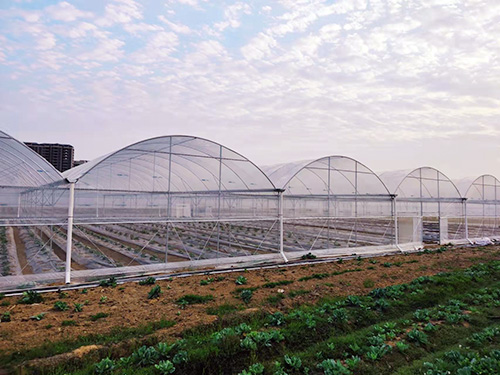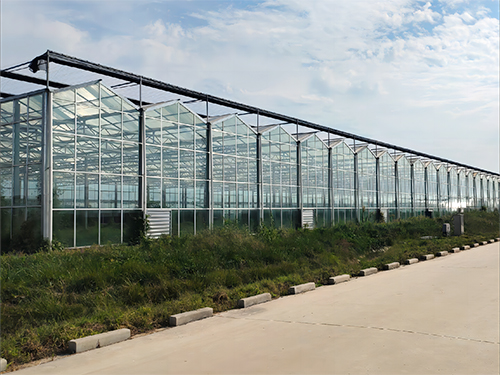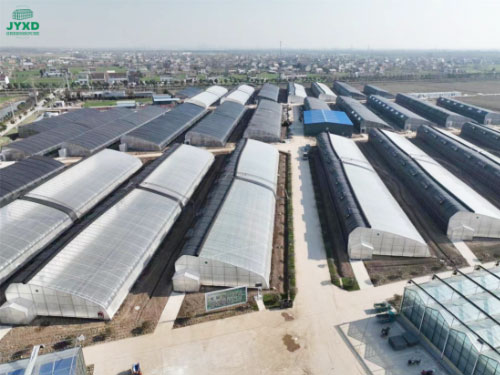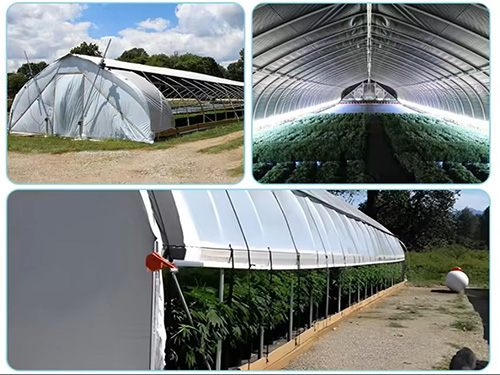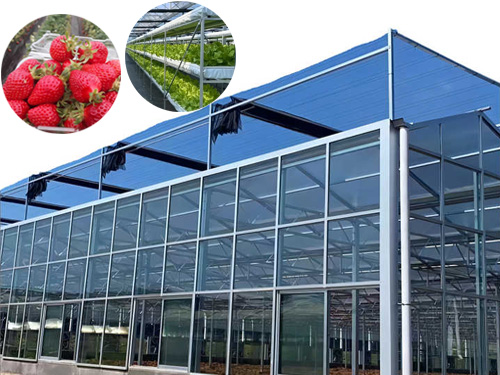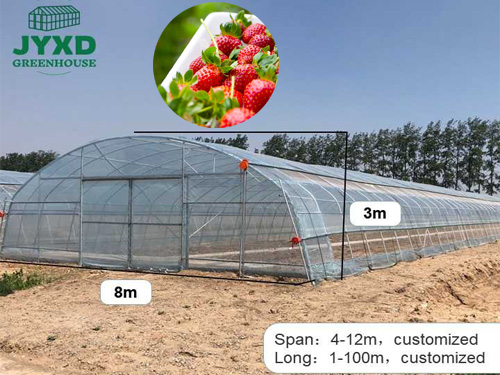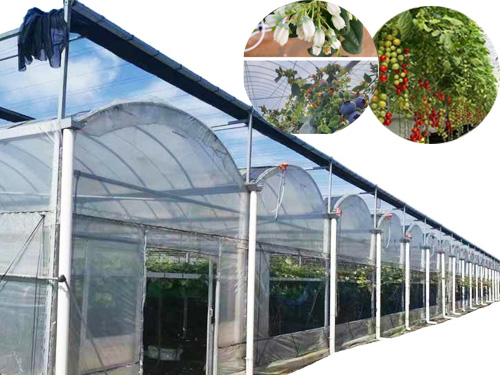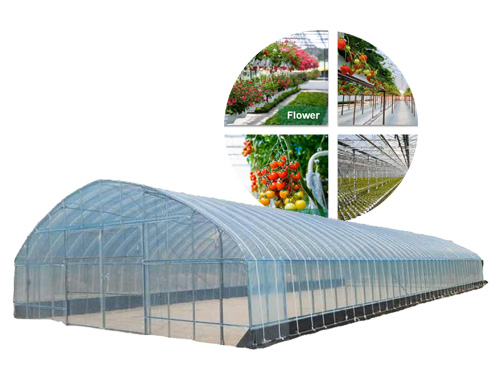NEWS DETAILS
NEWS INFORMATION
Greenhouse Humidity Control Technologies: From Humidification to Dehumidification Solutions
AUTHOR:jyxd-greenhouse DATE:2024-12-24 15:41:10 HITS:55
In greenhouse farming, managing humidity is crucial for optimal plant growth. Excessive humidity can lead to diseases, while low humidity can suppress plant development. Modern greenhouse management technologies offer various humidity control solutions, ranging from mist-based humidification to specialized dehumidification equipment, ensuring an ideal growing environment for your crops. This article will explore these technologies and their applications, helping you optimize greenhouse humidity management.
The Importance of Humidity Control
The humidity inside a greenhouse directly impacts photosynthesis, transpiration, and nutrient absorption. Inappropriate humidity levels can cause the following issues:
· Excessive Humidity: Leads to fungal, bacterial, and pest problems, such as gray mold and downy mildew.
· Low Humidity: Causes rapid moisture loss in plants, leading to leaf wilting and stunted growth.
· Humidity Fluctuations: Frequent changes in humidity stress crops, affecting yield and quality.
Core Technologies for Greenhouse Humidity Control
1. Mist Humidification System
Mist humidification is an efficient method to increase humidity by atomizing water into tiny droplets, which are evenly distributed throughout the greenhouse, quickly raising air moisture levels.
· Application: Suitable for dry climates or crops that require higher humidity, such as orchids and ferns.
· Advantages: Fast, efficient, and also provides cooling benefits.
· Considerations: Nozzles need to be cleaned regularly to prevent clogs, and excessive mist concentration should be avoided to prevent over-saturation.
2. Evaporative Humidifier
An evaporative humidifier increases humidity by natural evaporation of water, suitable for larger greenhouse spaces.
· Application: Ideal for medium to large greenhouses or crops grown year-round.
· Advantages: Low energy consumption and easy maintenance.
· Considerations: Efficiency depends on air movement, requiring the use of fans.
3. Dehumidifier
When humidity is too high, a dehumidifier quickly reduces the moisture content in the air, maintaining a dry greenhouse environment.
· Application: Useful in high humidity regions or during the rainy season.
· Advantages: Precise humidity control, reducing the risk of plant diseases.
· Considerations: Higher energy consumption, best combined with automated control systems.
4. Natural and Forced Ventilation
Adjusting greenhouse ventilation equipment allows for natural humidity control.
· Application: Suitable for regions with mild climate conditions.
· Advantages: Cost-effective, energy-saving, and environmentally friendly.
· Considerations: Dependent on external weather conditions, it may not meet requirements in extreme climates alone.
5. Humidity Control System
Modern humidity control systems combine sensors and automation to adjust humidification or dehumidification equipment in real-time based on set humidity parameters, ensuring a stable environment.
· Application: Ideal for high-value crops with strict humidity requirements.
· Advantages: Intelligent management, labor-saving.
· Considerations: Requires a higher initial investment.
Integrated Solutions for Humidity Control
To achieve the best results, it is often necessary to combine multiple technologies. For example, in dry regions, a mist humidification system can be paired with an evaporative humidifier. In areas with high humidity, dehumidifiers and ventilation systems can work together to maintain appropriate moisture levels.
Additionally, installing an automated humidity control system further enhances management efficiency, ensuring that greenhouse humidity remains optimal without frequent manual intervention.
Key Recommendations for Humidity Control
1. Choose the Right Equipment: Select appropriate humidity control equipment based on greenhouse size, crop type, and climate conditions.
2. Optimize Layout: Ensure the equipment covers the entire greenhouse area, avoiding uneven humidity distribution.
3. Regular Maintenance: Clean and inspect equipment to prevent clogs or damage that could impact control efficiency.
4. Monitor Data: Use sensors to monitor real-time humidity changes, providing data to support adjustment strategies.
Conclusion
Humidity control is a critical component of greenhouse management. It not only boosts plant growth speed and quality but also effectively reduces the risk of diseases, improving planting efficiency. By integrating different technologies, you can create a stable and efficient growing environment for your crops.
If you need professional humidity control equipment or customized solutions, feel free to contact our team. We provide tailored services for all types of greenhouses, helping you achieve efficient and productive planting with ease!
Hebei Juyou Xinda Greenhouse Facilities Co.,Ltd.
Copyright © 2024-2025 https://www.jyxd-greenhouse.com. All Rights Reserved Hebei Juyou Xinda Greenhouse Facilities Co.,Ltd.Copyright





 Current Location:
Current Location: